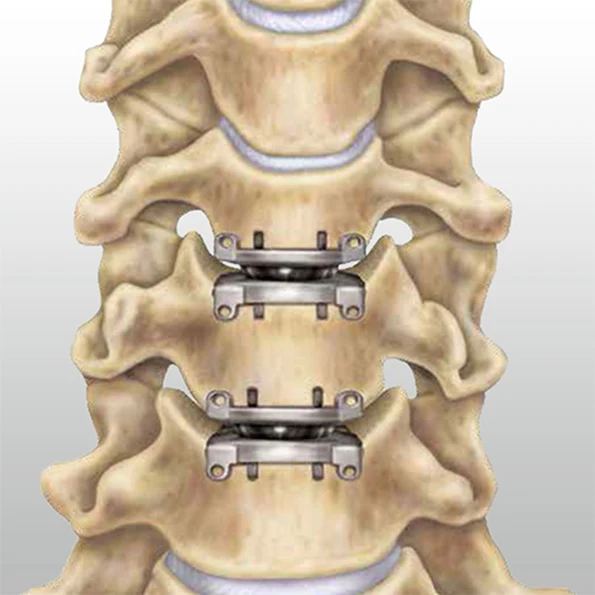1. Procedure Overview
Spinal disc implantation, also known as artificial disc replacement (ADR), is a surgical procedure used to replace a damaged or degenerated intervertebral disc in the spine, most commonly in the lumbar or cervical regions. This procedure is often performed to alleviate pain caused by degenerative disc disease or herniated discs, while preserving the motion of the spine.
Key steps include:
Anterior approach: The surgeon accesses the spine through the front of the body.
Removal of the damaged disc: The herniated or degenerated disc is carefully removed.
Implantation of an artificial disc: A synthetic disc made of metal or polymer is inserted to maintain disc height and function.
The goal is to restore normal spine movement, relieve pressure on nerves, and provide long-term pain relief.
2. Type of Anesthesia
Spinal disc implantation is performed under general anesthesia, ensuring that the patient is unconscious and pain-free during the surgery.
3. Possible Risks and Complications
Infection
Bleeding
Nerve damage or spinal cord injury
Implant failure or loosening
Adjacent segment degeneration (wear or problems in nearby discs)
Blood clots
Anesthesia-related complications
Difficulty swallowing (if cervical approach)
4. Hospital Stay Duration
The hospital stay typically lasts 2 to 3 days, but it may vary depending on the individual’s recovery and the complexity of the surgery.
5. Important Post-Operative Care
Pain management and wound care
Gradual mobilization and walking soon after surgery
Physical therapy to restore strength and mobility
Avoidance of heavy lifting or twisting for several weeks
Follow-up imaging (X-rays, CT, or MRI) to check the implant’s position and healing
Regular check-ups to monitor long-term outcomes and ensure implant stability

